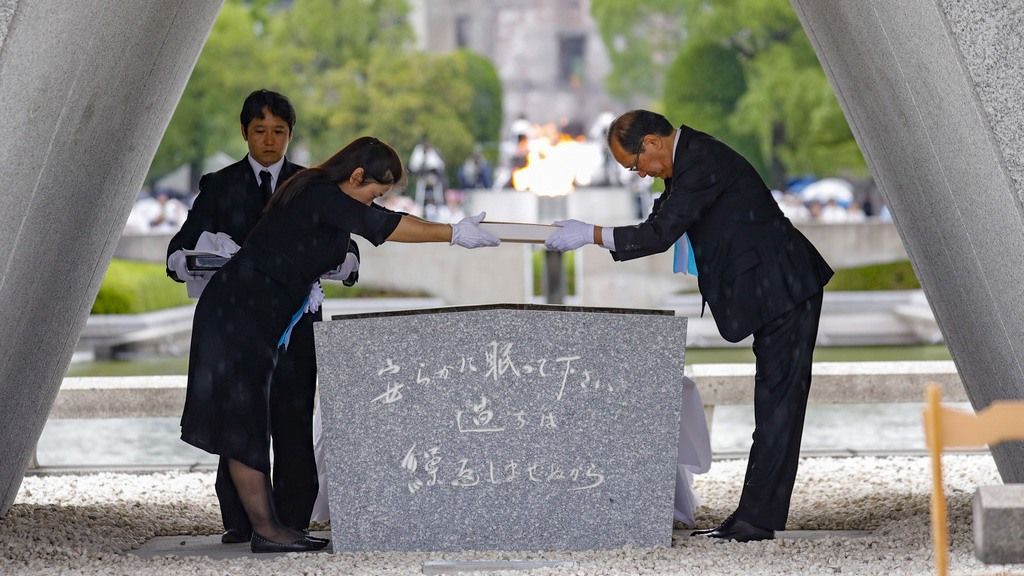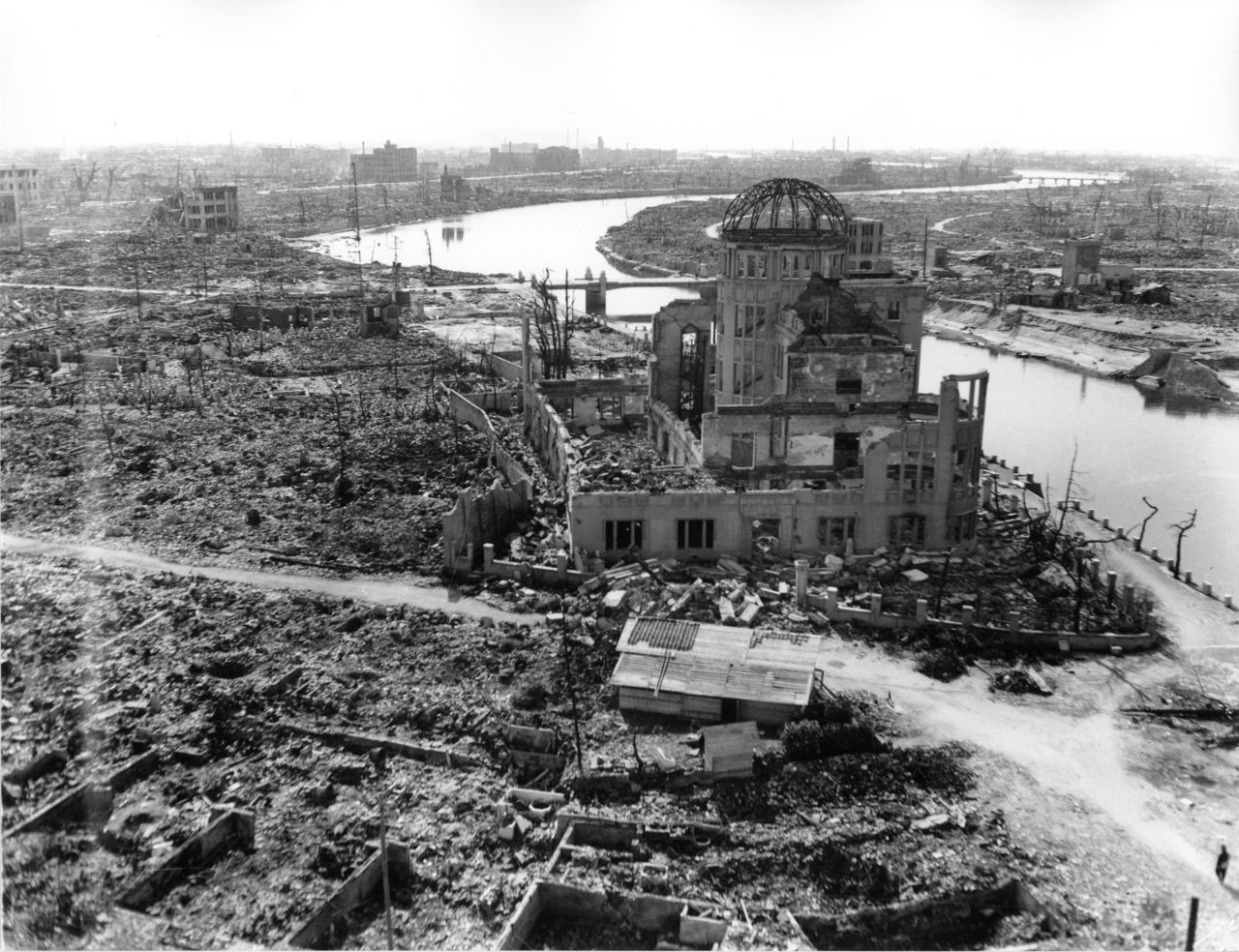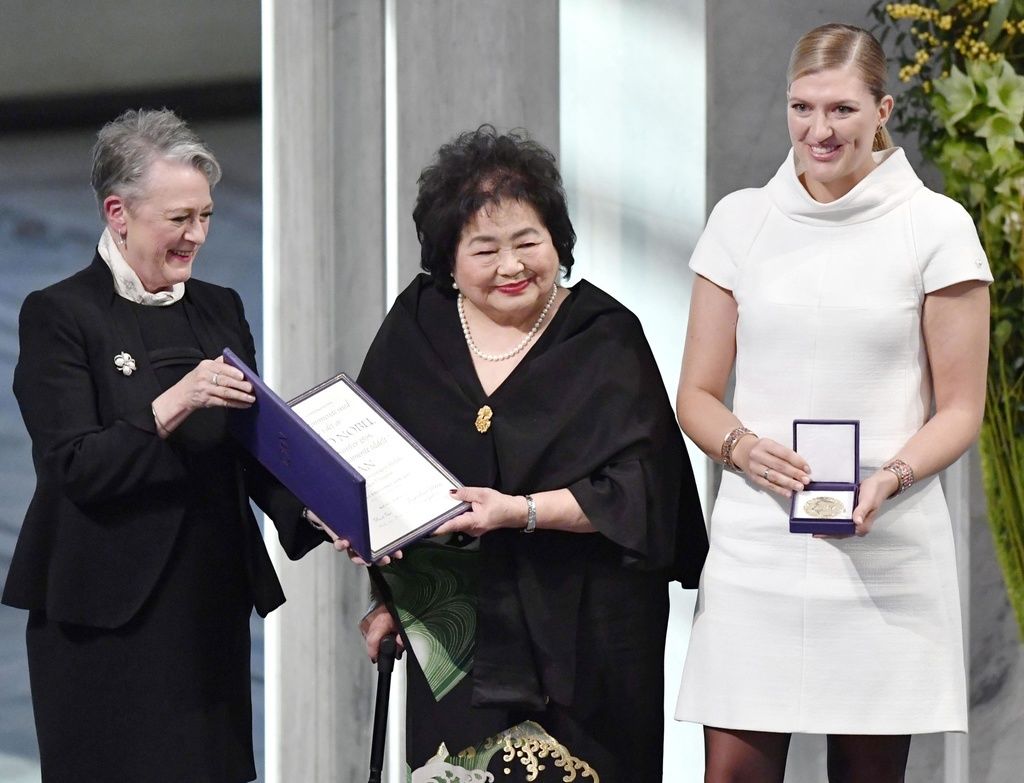
Report from Hiroshima: 75 Years Later
Hiroshima’s Survivors and Activists in a Race Against Time
In-depth Society Politics- English
- 日本語
- 简体字
- 繁體字
- Français
- Español
- العربية
- Русский
Seventy-five years ago, the United States detonated two atomic bombs over Hiroshima and Nagasaki, incinerating and maiming hundreds of thousands indiscriminately. The anniversaries of these events in August of each year are important public occasions for citizens and leaders dedicated to nuclear disarmament and world peace. They are also intensely personal times of remembrance for the families of the victims.
Typically, about 50,000 people gather in Hiroshima each August 6 for the annual Peace Memorial Ceremony, which includes a moment of silence at 8:15 am, the time of the attack. This year, in keeping with social distancing measures to slow the spread of COVID-19, only a fraction of that number will be admitted to the site, and ceremonies elsewhere in the nation have been scaled down as well. The World Conferences Against Atomic and Hydrogen Bombs, which coincide with these anniversaries, will be held via webinar. It is a challenging time for those committed to preserving the memory of the bomb’s victims and advancing the cause of nuclear disarmament.
The Bomb’s Incalculable Toll
The world has grown all too accustomed to hearing that the bomb killed about 140,000 people in Hiroshima and 70,000 in Nagasaki by the end of 1945. After all, local advocates, activists, and journalists like myself have cited those figures time and again. Inevitably, however, one must ask whether those numbers do justice to the humanitarian tragedy of the bomb. At a time when it has become customary to honor each victim of a disaster individually, by name, the casualties of the nuclear attack remain largely anonymous. Those victims, too, were individuals with names, each living his or her own precious life right up until that moment in August when the bomb exploded. By lumping them together in units of “tens of thousands,” are we not diminishing the sanctity of each human life?

The remains of the Hiroshima Prefectural Commercial Exhibition Hall, now known as the A-Bomb Dome or Genbaku Dome, and the area around the hypocenter of the bomb. Photograph taken in November 1945 by the US Army. (Courtesy Hiroshima Peace Memorial Museum)
The total of 140,000 for Hiroshima is a rough figure based on comparing a prewar population estimate with a postwar government census. But the scholar who led the research emphasized that this figure was only approximate and would need to be revised as better data became available.
Over the past four decades, the city of Hiroshima has been meticulously compiling the names of victims from various records. As of the end of March 2019, it had identified 89,025 individuals killed by the bomb between August 6 and December 31, 1945. No doubt many thousands more are destined to remain nameless and forgotten. And to those we must add all who died after that arbitrary cutoff date, whether from burns, injuries, or radiation-linked illnesses like leukemia.
In fact, all who survived the bombing itself—the hibakusha, as they are known—faced the prospect of premature death from cancer and other illnesses linked to radiation exposure. Hiroshima University Professor Emeritus Kamata Nanao, who spent years studying the long-term health effects of the bomb, has said that it subjected survivors to “a lifetime of torment.” Hibakusha suffer from a particularly high incidence of “multiple primary cancers”— malignant tumors occurring independently (that is, not via metastasis) at more than one site. A high incidence of myelodysplastic syndromes, a bone marrow failure that often progresses to acute myeloid leukemia, has also been confirmed among older survivors. In addition, the hibakusha have faced prejudice and discrimination in the community. To the bomb’s still-undermined death toll we must add the lifelong suffering of those who lived.
In a recent series titled Hiroshima no kūhaku (The Voids of Hiroshima), my newspaper, the Chūgoku Shimbun, attempted to fill some of the persistent gaps in our knowledge of the bomb’s impact, from the human casualties to the destruction of buildings and infrastructure, administrative records, and basic urban and community functions. That a single small-scale nuclear device could cause such devastation drove home the full horror and inhumanity of nuclear weapons.
The Immorality of Nuclear Weapons
“When I think of all the people who lost their lives on that day, I can’t just sit back and do nothing,” says hibakusha Tanaka Toshiko. “It’s the job of those of us who survived the bombing to fight for the abolition of nuclear weapons.” Tanaka, who was living a mere 700 meters south of the hypocenter until a week before the attack, lost dozens of friends and neighbors in the attack. Neither she nor anyone else who lives with the memory of the dead can simply consign that event to history.
There never has been, nor can there ever be, a moral justification for the use of nuclear weapons. Whatever lessons we draw from Hiroshima and Nagasaki must surely start here.
Ever since its founding in the 1950s, the hibakusha umbrella organization Nihon Hidankyō (Japan Confederation of A- and H-Bomb Sufferers Organizations) has been demanding reparations to the victims’ families from the Japanese government, which waived all claims against the United States during negotiations for the 1951 San Francisco Peace Treaty. In the members’ view, neither Japan’s disastrous war of aggression nor the US military’s use of the bomb against Hiroshima and Nagasaki can be excused as an unavoidable tragedy. They see nuclear weapons as an absolute evil and maintain that the only way to ensure that they are never used again is to eliminate them entirely. This is the unwavering mission of the hibakusha movement.
New Hope for a Nuclear Weapons Ban
Unfortunately, ever since Hiroshima and Nagasaki, the people of the world have lived in fear of nuclear war. The Treaty on the Non-Proliferation of Nuclear Weapons (NPT) permits the United States, Russia, Britain, France, and China to maintain and expand their nuclear arsenals as privileged “nuclear weapons states.” Meanwhile, India, Pakistan, Israel, and North Korea, placing themselves outside the NPT framework, have acquired nuclear weapons as well. Altogether, these nine countries are believed to possess more than 13,000 nuclear warheads.
This is a depressing reality indeed for the hibakusha who have shared their personal traumas in an effort to rid the world of this evil. But around 2010, the tide began to turn in a hopeful direction as the focus of international opinion shifted from the strategic importance of nuclear weapons to their catastrophic humanitarian consequences. In 2017, the United Nations General Assembly approved the Treaty on the Prohibition of Nuclear Weapons with a 122-member majority. The TPNW, citing “the unacceptable suffering of and harm caused to the victims of the use of nuclear weapons (hibakusha),” prohibits the development, testing, production, stockpiling, stationing, transfer, or use of such weapons and calls for environmental remediation and assistance to victims. Its passage was a deeply stirring achievement for the hibakusha, who had worked tirelessly toward that end in cooperation with activists around the world.
At least 50 UN member states must ratify the TPNW if it is to come into effect, and as of July 16, 2020, only 40 had done so. With the major nuclear nations all strongly opposed, the treaty’s immediate prospects are not promising. Even so, the very existence of a UN treaty that regards all nuclear weapons as equally evil, regardless of who possesses them, is a huge victory for the cause of nuclear nonproliferation and disarmament. The TPNW has the strong support not only of Hiroshima’s hibakusha and nuclear disarmament groups but also of the City of Hiroshima, Hiroshima Prefecture, and Mayors for Peace, chaired by the mayor of Hiroshima. Together we will continue to campaign for its ratification.
The Japanese Government’s Betrayal
In December 2017, the International Campaign to Abolish Nuclear Weapons (ICAN) was awarded the Nobel Peace Prize. The acceptance speech was delivered by hibakusha Setsuko Thurlow, a longtime campaigner for the abolition of nuclear weapons, who has made her home in Canada. Thurlow was 13 years old when she lost her sister, eight other relations, and dozens of schoolmates to the bomb. She has spent years speaking to North American audiences about her experiences while at the same time deploring the suffering caused by Japanese aggression. There is little doubt that her acceptance speech, in which she spoke of TPNW as “the beginning of the end of nuclear weapons,” resonated with audiences worldwide.

Setsuko Thurlow (center) accepts the Nobel Peace Prize on behalf of the International Campaign to Abolish Nuclear Weapons (ICAN) alongside the organization’s executive director Beatrice Fihn (right) in Oslo on December 10, 2017. © Kyodo
Afterwards, however, she told me, “There were things I couldn’t say because I was there as the representative of ICAN, not as an individual hibakusha.” What she suppressed was her intense anger at her two “mother countries,” Japan and Canada, for choosing America’s nuclear umbrella over the TPNW. She is not alone. In Hiroshima, many of the hibakusha took the Japanese government’s decision not to take part in the treaty negotiations as a betrayal.
The nuclear states and their allies reject the TPNW on the grounds that it will weaken the NPT. Supporters of the treaty counter that the nuclear-armed nations themselves are the source of the NPT’s weakness, and they argue that the TPNW would address those problems. The anti-treaty forces insist that the international security situation must improve before nuclear disarmament can progress, while the pro-treaty side feels that the nuclear powers are making any improvement impossible. Obviously, the two sides are deeply divided. Amid this standoff, the Japanese government, which pleads that it is “too early” for a nuclear weapons ban, claims to be trying to bridge the chasm, but few people in Hiroshima take that position seriously. When put to the test, the government has repeatedly sided with the nuclear nations against its own people. Meanwhile, the New Strategic Arms Reduction Treaty (New START) between the United States and Russia is set to expire in February 2021 amid mounting bilateral tension.
Acting Locally, Thinking Globally
Japanese citizens are beginning to recognize that they need to start pressuring their own politicians more, as well as devoting energy to persuading the outside world. A new generation is beginning to act on that belief, as by forcing individual Diet members to take a stand for or against the TPNW. One senses that the global activities of ICAN, combined with repeated appeals to Japanese citizens by hibakusha like Setsuko Thurlow, are finally beginning to get through.
But time is running out for the hibakusha. The average age of Japanese residents officially recognized as survivors (holders of hibakusha health handbooks) has climbed to 83.3, and their total number had fallen to 136,682, as of March 2020. The day is fast approaching when there will be no one left to bear witness to the horror of nuclear weapons. In another 10 or 25 years, when Hiroshima has faded from our collective memory, will there be any effective brake on the use of nuclear weapons?
The COVID-19 pandemic has forced the postponement of the 2020 NPT Review Conference, originally scheduled to meet in New York in April and May this year. (It has also interfered with plans for a delegation of aged hibakusha and other antinuclear advocates to travel to New York to present the results of the International Signature Campaign in Support of the Appeal of the Hibakusha for the Elimination of Nuclear Weapons.) One can only hope that the parties to the treaty will use the delay as an opportunity to reconsider the basic premises of this failed nonproliferation system.
Since the outbreak of the pandemic, I have heard one activist after another remark on the meaninglessness of the military power balance and nuclear deterrence in the face of the global threats facing humanity. At a time when the international community should be coming together to fight the coronavirus, the biggest security threat of all is that posed by superpower leaders who continue to inflame tensions while diverting vast sums of money to nuclear arms. On this seventy-fifth anniversary of the atomic bombing of Hiroshima and Nagasaki, whose toll so far exceeds our ability to quantify it, let us renew our pledge to forever renounce such weapons of mass destruction.
(Originally written in Japanese. Banner photo: Hiroshima Mayor Matsui Kazumi (right) adds the names of atomic bomb victims to the cenotaph during the seventy-fourth anniversary memorial service in 2019. Courtesy Hiroshima municipal government; © Xinhua News Agency/Kyodo News Images.)
Hiroshima Nagasaki nuclear weapon nuclear atomic bombing nuclear disarmament